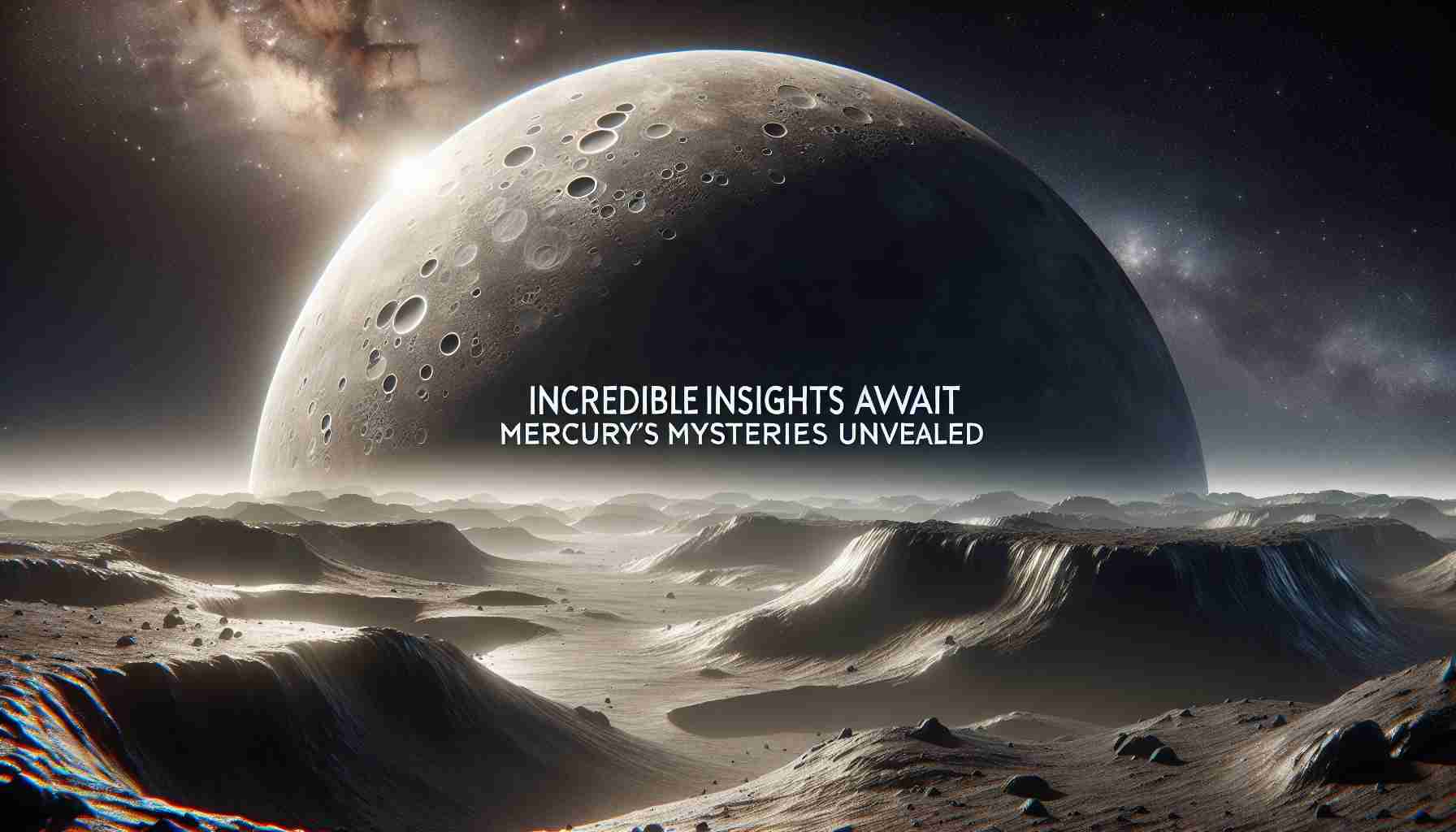Curiosity reaches new heights as the BepiColombo spacecraft shares breathtaking images of Mercury’s diverse landscapes, from icy craters to sun-drenched plains.
On January 8, BepiColombo made a significant pass by Mercury, flying just 295 kilometers above its North Pole. This low flyby provided an exceptional view of the planet’s unfamiliar terrain, beginning its journey over Mercury’s night side and gliding over the defining “terminator” line—the pivotal divide between day and night. Here, the stark elevation of crater rims creates striking shadows that envelop the already cold crater floors, showcasing some of the chilliest areas in our solar system, remarkably close to the Sun.
Among the spectacular findings are images of the vast volcanic plains known as Borealis Planitia, shaped billions of years ago by flowing lava during monumental eruptions. The spacecraft also highlighted Mercury’s younger geological features, such as the notable 40-kilometer wide Nathair Facula, indicating a history of explosive volcanic activity.
BepiColombo, a collaboration between the European Space Agency and the Japan Aerospace Exploration Agency, is on a quest to deepen our understanding of Mercury. After this flyby, which serves as a crucial gravity assist maneuver, the spacecraft is set to arrive in Mercury’s orbit by late 2026, paving the way for groundbreaking exploration of this enigmatic planet.
Unlocking the Secrets of Mercury: Insights from BepiColombo’s Latest Flyby
Overview of BepiColombo’s Mission
The BepiColombo spacecraft, a joint venture between the European Space Agency (ESA) and the Japan Aerospace Exploration Agency (JAXA), is on a historic mission to explore Mercury, the least understood planet in our solar system. Launched in October 2018, the mission aims to unveil the mysteries of Mercury’s formation, geological evolution, and its magnetic field.
Key Features of the BepiColombo Mission
– Dual Spacecraft Structure: BepiColombo consists of two spacecraft: the Mercury Planetary Orbiter (MPO) and the Mercury Magnetospheric Orbiter (MMO). This design allows for simultaneous study of Mercury’s surface and its magnetic environment.
– Innovative Technology: Equipped with advanced imaging systems and scientific instruments, BepiColombo can capture high-resolution images and conduct surface analysis, significantly improving our understanding of Mercury’s geology and atmosphere.
Recent Findings from the Flyby
During its recent flyby on January 8, BepiColombo executed a remarkable close approach, capturing stunning images of Mercury’s diverse landscape. The spacecraft flew just 295 kilometers above Mercury’s North Pole, offering unprecedented views of its features, such as:
– Crater Rims and Shadows: The low-altitude images highlight the dramatic changes in elevation surrounding massive craters. These observations help scientists understand the planet’s surface composition and geological processes.
– Borealis Planitia Volcanic Plains: The Impressive volcanic plains, shaped by ancient lava flows, illustrate Mercury’s dynamic geology over billions of years. These areas are vital for understanding the planet’s volcanic history.
– Nathair Facula: The discovery of Nathair Facula, a relatively young geological feature, indicates more recent volcanic activity, shedding light on Mercury’s evolving geological landscape.
Use Cases and Importance of the Findings
The data collected by BepiColombo is crucial for:
– Understanding Planetary Formation: Insights from Mercury will contribute to the broader comprehension of planetary formation in our solar system, particularly regarding rocky planets.
– Comparative Planetology: By studying Mercury alongside Venus and Mars, scientists can draw comparisons that enhance our knowledge of planetary atmospheres and conditions for potential habitability.
– Magnetic Field Studies: The mission will provide valuable information regarding Mercury’s magnetic field, which is essential for understanding how it formed and evolved over time.
Challenges and Limitations
While the findings are groundbreaking, there are several challenges associated with the BepiColombo mission:
– Harsh Environment: Mercury’s proximity to the Sun presents significant thermal challenges for the spacecraft and its instruments, necessitating advanced engineering solutions to manage heat.
– Long Journey Ahead: BepiColombo is projected to enter Mercury’s orbit by late 2026, meaning researchers will continue to wait years for comprehensive data collection.
Upcoming Innovations and Expectations
As BepiColombo continues on its trajectory, several exciting innovations and expectations arise:
– High-Resolution Imaging: Future flybys and the eventual orbital observations will provide increasingly detailed images, advancing our understanding of Mercury’s intricate surface features.
– New Scientific Discoveries: As the mission progresses, scientists anticipate groundbreaking discoveries that could redefine our knowledge of the solar system’s innermost planet.
Conclusion
The BepiColombo mission stands at the forefront of planetary exploration, with its recent flyby enhancing our understanding of Mercury’s unique landscape and geology. As we await further discoveries in the coming years, interest in planetary science will undoubtedly soar. For more updates on space exploration, visit ESA and JAXA.


















